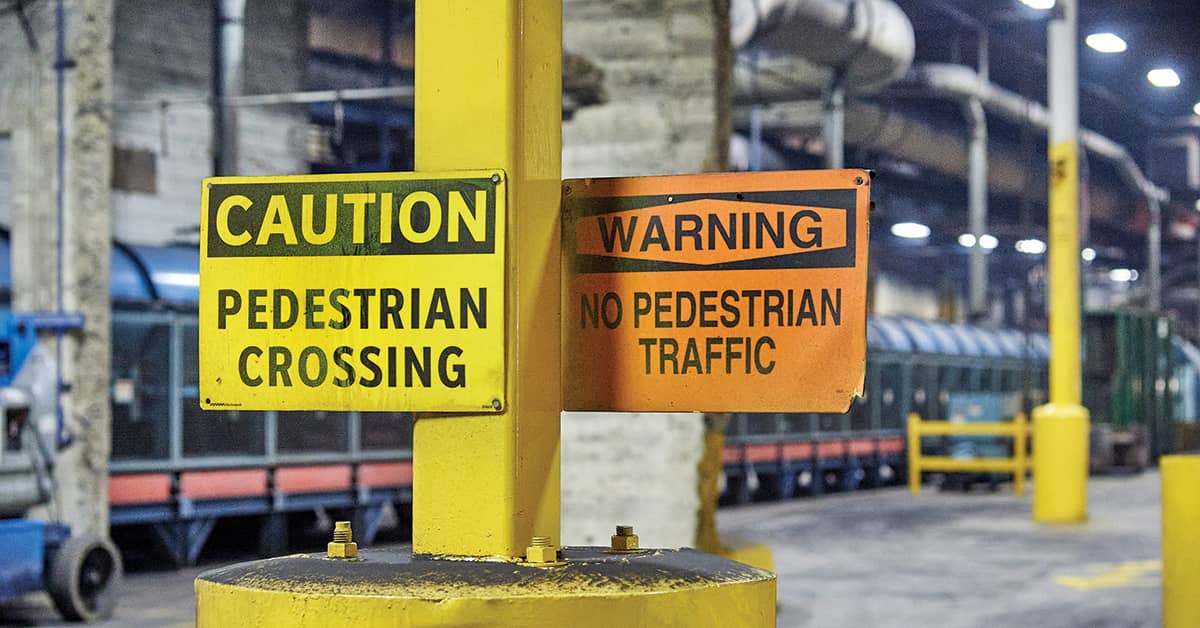All signs point to safety: Make sure employees understand them
Date Posted: 08/18/2025

OSHA doesn’t take it for granted that everyone knows the meanings behind warning signs, and neither should you. The general industry standard on specifications for accident prevention signs and tags (29 CFR 1910.145) includes provisions to instruct and inform employees. A related standard, 1910.144, sets a safety color code for marking physical hazards.
When you explain the standards for warning signs and tags, you’ll avoid any confusion your workers might have when it comes to identifying the hazards in your facility. As you conduct training, refer to samples of your signs and tags, and let workers know where they’ll see them as they work.
Common types of signs
Danger signs indicate immediate danger and that special precautions are necessary. These signs use the colors red, black, and white. Other items, such as safety cans for flammable liquids, also use the color red to indicate danger.
Caution signs are used to warn against potential hazards or caution against unsafe practices. The standard color of the background on caution signs is yellow, and the panel is black with yellow letters.
The color yellow is used to mark physical hazards where employees could strike against something, stumble, fall, trip, or be caught between items.
Containers, rooms, equipment, materials, and experimental animals that are or may be contaminated with biological hazards are marked using a biohazard sign or tag. The biohazard symbol is made up of interlocking circles that form a triangular shape. The bloodborne pathogens standard (1910.1030) requires these signs to be fluorescent orange-red in color. One common place to find the biohazard symbol is on the sharps disposal containers found in many public restrooms. These containers are used to dispose of used hypodermic needles that people use to inject insulin or medications.
Standard-specific posting requirements
Many OSHA rules have their own requirements for signs and tags. For example, the materials handling rule (1910.176) requires that signs be used to indicate clearance limits under and around obstacles. And, OSHA often requires regulated areas where certain chemicals are used (such as asbestos, carcinogens, lead, and formaldehyde) to be marked with signs.
Don’t forget to look down
Employees expect to see warning signs on the wall, but another good place to alert people to hazards is on the floor. OSHA’s standard on general requirements for walking-working surfaces (1910.122(b)(2)) requires permanent aisles to be appropriately marked. This is often done with yellow strips to outline the boundary of the aisle.
How Safety Management Suite Can Help
For your safety signs to be effective, it’s wise to take a systematic, standardized, and compliant approach! Our upcoming webinar, Unleash the Power of Safety Signs: Point Your Way to OSHA-Compliant and Effective Worker Signage on Thursday, August 28, at 1:00 PM CDT, will cover OSHA sign requirements; steps to an effective safety sign program; selecting sign elements, formats, colors, and materials; and much more! The last 10 to 15 minutes of the event will be saved to answer your questions. Log in or start a trial and save your seat today!
E-mail Newsletter
Sign up to receive the weekly EHS Insider email newsletter for safety articles, news headlines, regulatory alerts, industry events, webcasts, and more.